New page: 15 July 2008
Updated 8 Dec 2019
Comments from Bernd F added
I have settled on the spelling 'Dolgorouky'






The Dolgorouki Rotary Steam Engine |
New page: 15 July 2008 |
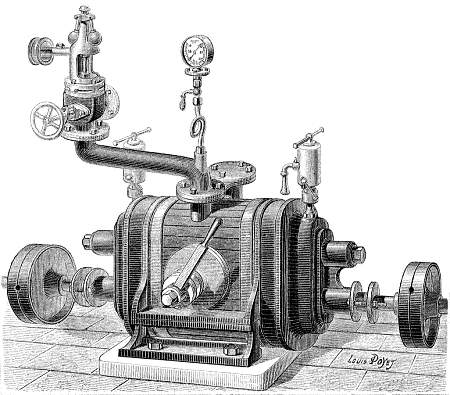 | Left: The Dolgorouky Engine.
|
Pictures of real rotary engines that are still in existence are unfortunately very rare. I am therefore very glad to report that I have just discovered a Dolgorouky Engine in the Vienna Technological Museum.
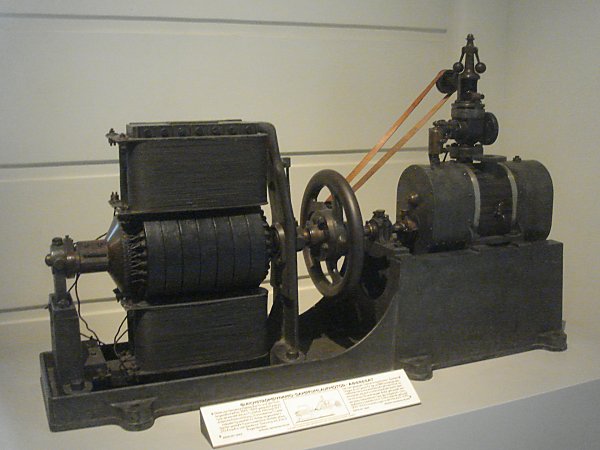 | Left: Dolgorouky Engine at Vienna.
|
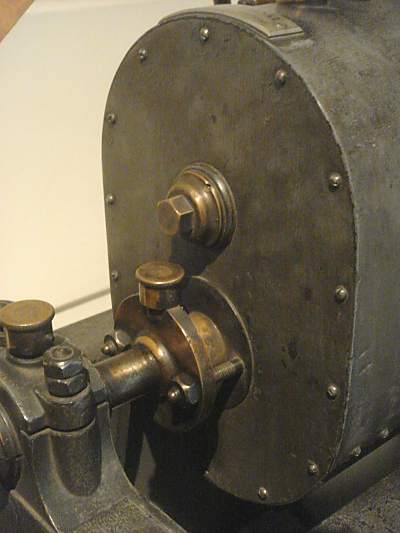 | Left: Dolgorouky Engine at Vienna
|
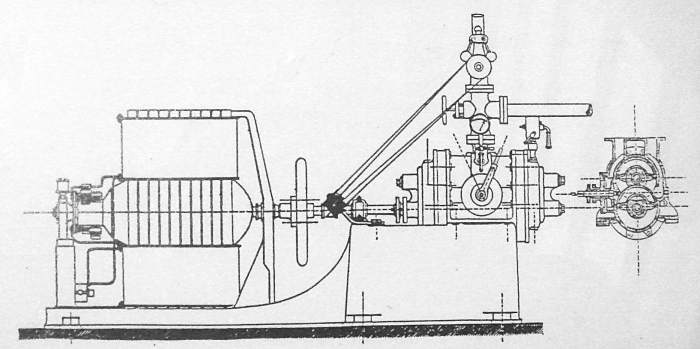 | Left: Dolgorouky Engine at Vienna
|
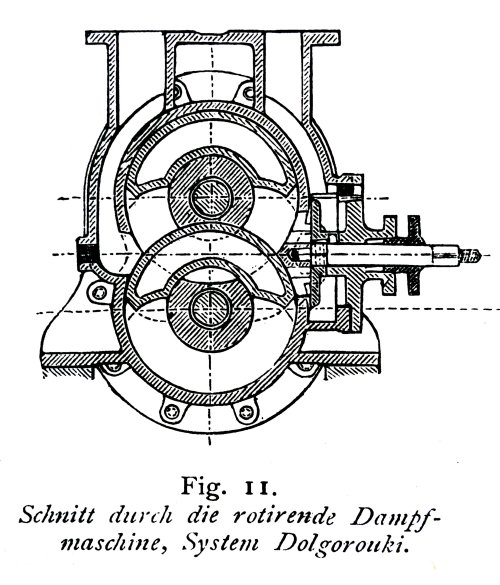 | Left: Dolgorouky Engine at Vienna.
|
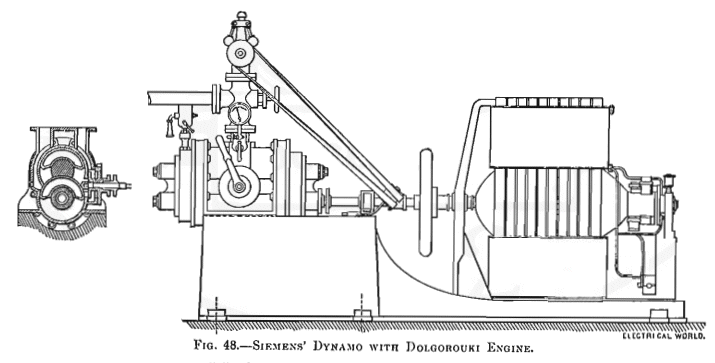 | Left: Dolgorouky Engine at Vienna.
|

THE BERLIN PATENT
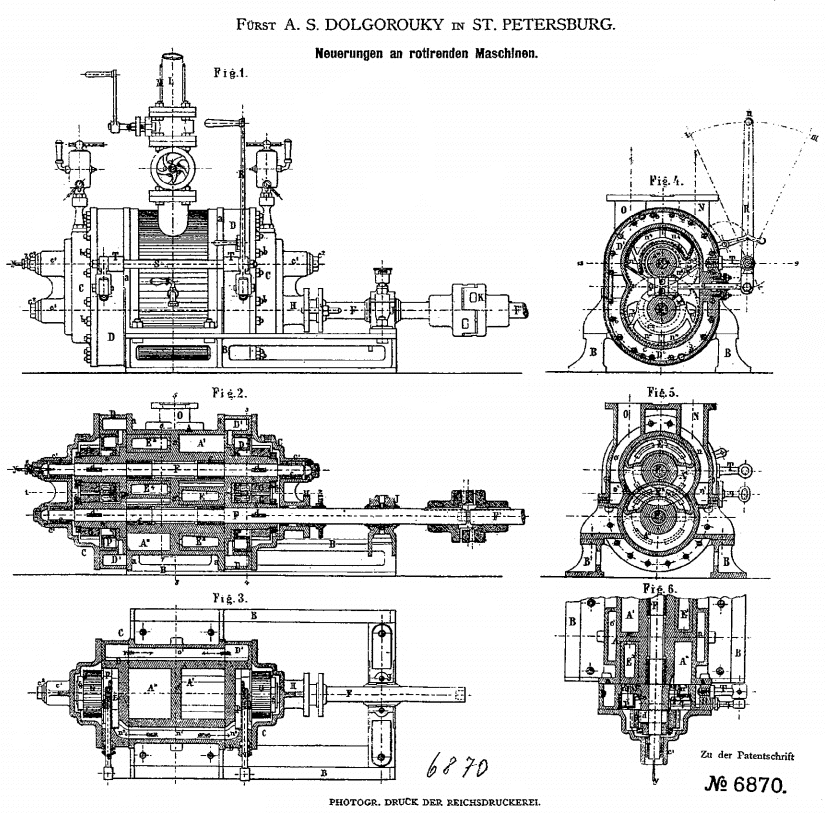 | Left: Diagram of the engine from the German patent: 1879
|

MORE INFORMATION ON THE DOLGOROUKY ENGINE
The following analysis of the Dolgorouky engine is the work of my good friend Bernd F. It is derived from a book called: Elektrische Schienenfahrzeuge in Glasers Annalen 1879 - 1908, copyright Steiger Verlag, Solingen, 1990 It is a licensed re-edition of an original by transpress VEB Verlag für Verkehrswesen. It contains info on tests conducted by Adolf Slaby, who today is better known as one of the pioneers of radio. Slaby was personally supported in his private research by Siemens.
"Further research revealed a surviving specimen in the Vienna Technological Museum and an article by Dr. Werner Siemens in the railway technlogy journal Glasers Annalen, August 1, 1881. The engine had two pairs of semi-cylindrical rotors in 2 chambers, synchronised by gearing in the two end casings. There is a centrifugal governor in the steam inlet pipe at top left. The lever on the front turns a disc valve to allow full admission for startup with no dead center problems or 1/3 cutoff for more economical running. The position of the steam exhaust appears to be the blanked-off flange just behind the inlet pipe.""This engine is not the one in the drawing above. It is approximately half the size, and the engine-dynamo combination is apparently from a production run by Siemens & Halske. It looks like the drawing published by Siemens in the 1881 article (and possibly on other occasions), plus some thermal lagging around the gearboxes which double as steam chests in cutoff mode. According to the description in front of the baseplate, this one was made in 1883 and used to power some lights. The engine gave 5 to 6 horsepower at 900 to 1000 rpm, which is a much faster speed than any reciprocating engine would run at, and much better suited for direct coupling to a generator. The dynamo output was 20 Amps." |

THE INVENTOR: PRINCE ALEXIS DOLGOROUKY
 | Left: Reference to Belgian Dolgorouky Engine patent
|
 | Left: Reference to Belgian Dolgorouki Engine patent
|
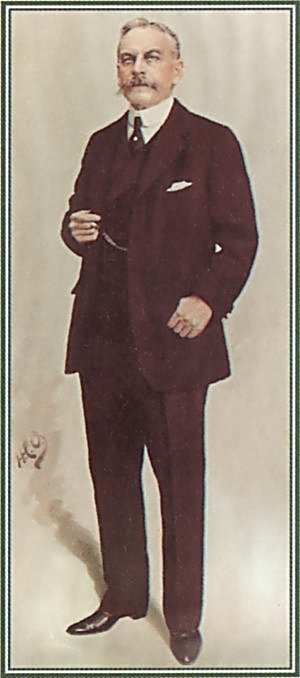 | Left: Prince Alexis Dolgorouky: 1846-1915
|

   
|